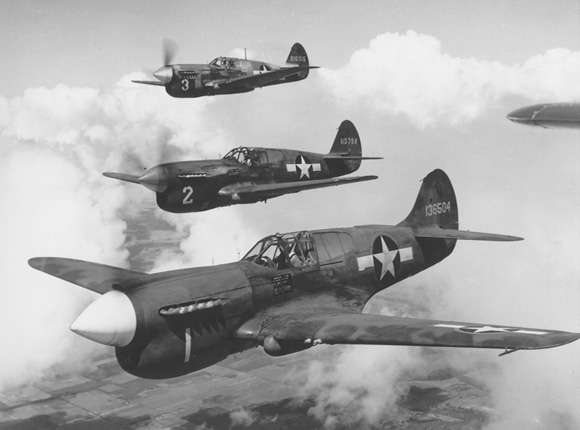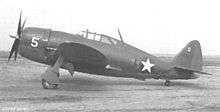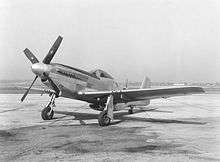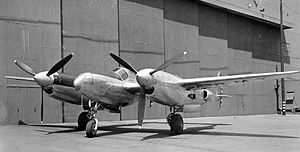 Lockheed P-38 Lightning
Lockheed P-38 Lightning
Model 22 P-38 Lightning, a twin-engined long-range interceptor with two tail-booms and the pilot and armament in a small central nacelle. A tricycle undercarriage is fitted. Dimensions 52/ 37.10/ 9.10/ 327.5 sq ft; two 1,150hp Allison V-1710-27/29 with turbochargers; max speed 400mph; cruising speed 290mph; service ceiling 44,000ft; range 475miles on internal fuel; armament one 20mm cannon and four .50in Browning MGs in the nose.
Variants and production figures:
1 XP-38 prototype first flown in February 1937
13 YP-38 service evaluation aircraft with one 37mm cannon and four 0.50in MGs
66 P-38 production aircraft with one 37mm cannon and four 0.50in MGs and armour added
1 XP-38A with pressurised cockpit first flown 1938
210 P-38D/E delivered from early 1940 with 37mm cannon replaced by 20mm cannon, changes to electric and hydraulic systems and extra ammunition for the nose guns
F-4, photo-reconnaissance variant of P-38D with four cameras in nose replacing armament, 99 on order from 1941
350 P-38F on order from April 1942, improvements include racks inboard of the engines for fuel tanks or up to 2,000 Ibs of bombs.
P-38G begins testing early 1943. Improvements are a better radio as well as improved Allison V-17105 engines making 1,475 hp, along with other improvements (1) A variant of this model will serve as a night fighter and will be painted flat-black with conical flash hiders on the guns, an AN/APS-6 radar pod below the nose, and a second cockpit with a raised canopy behind the pilot's canopy for the radar operator. This variant will be named the P-38M Night Lightning, both will enter service in late 1943. 240 P-38M are ordered in 1943 to fill 4 new Night Fighter Groups in the 1st, 2nd, 3rd, and 5th Air Force.
(1) OTL P-38L.






